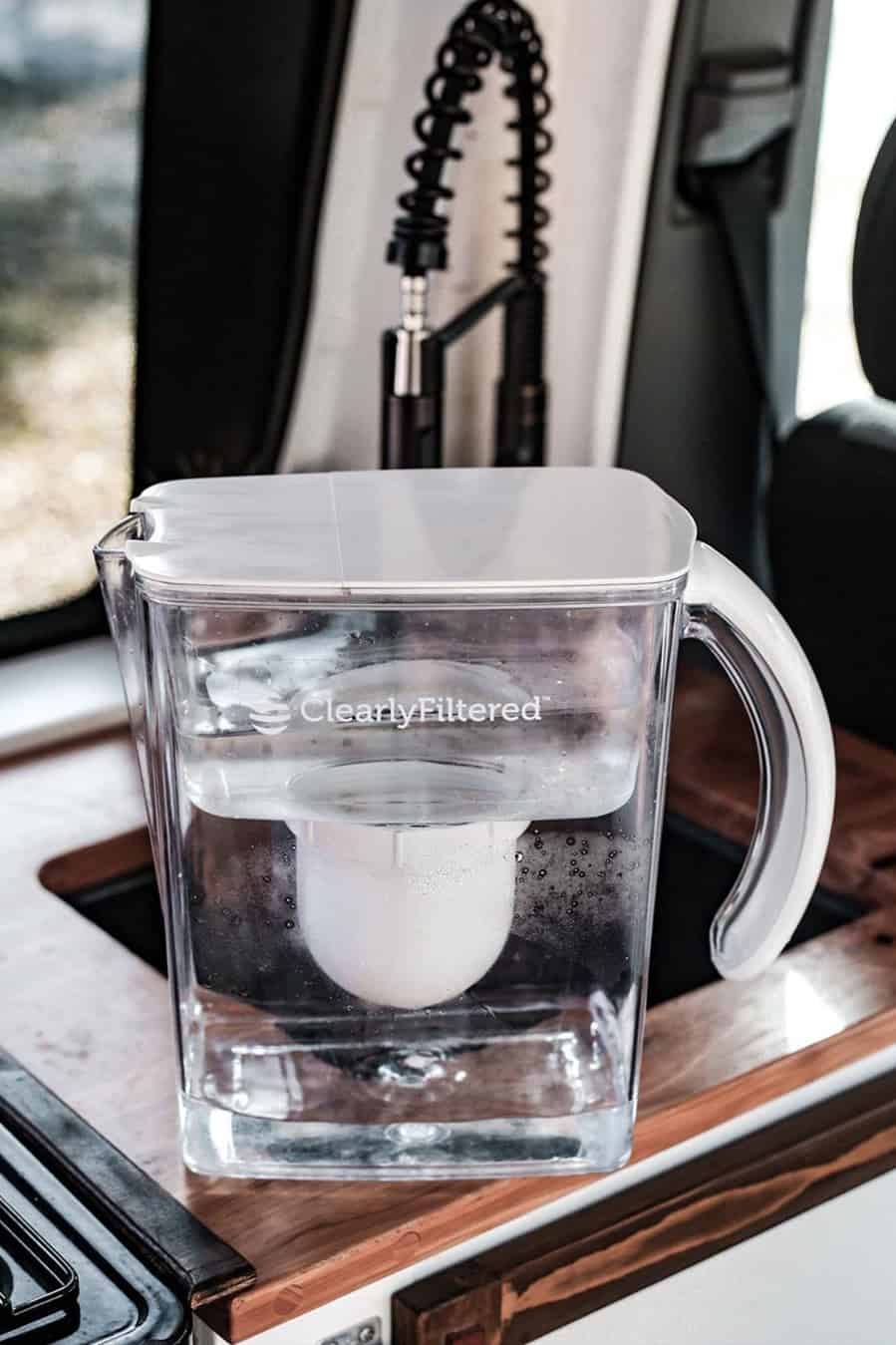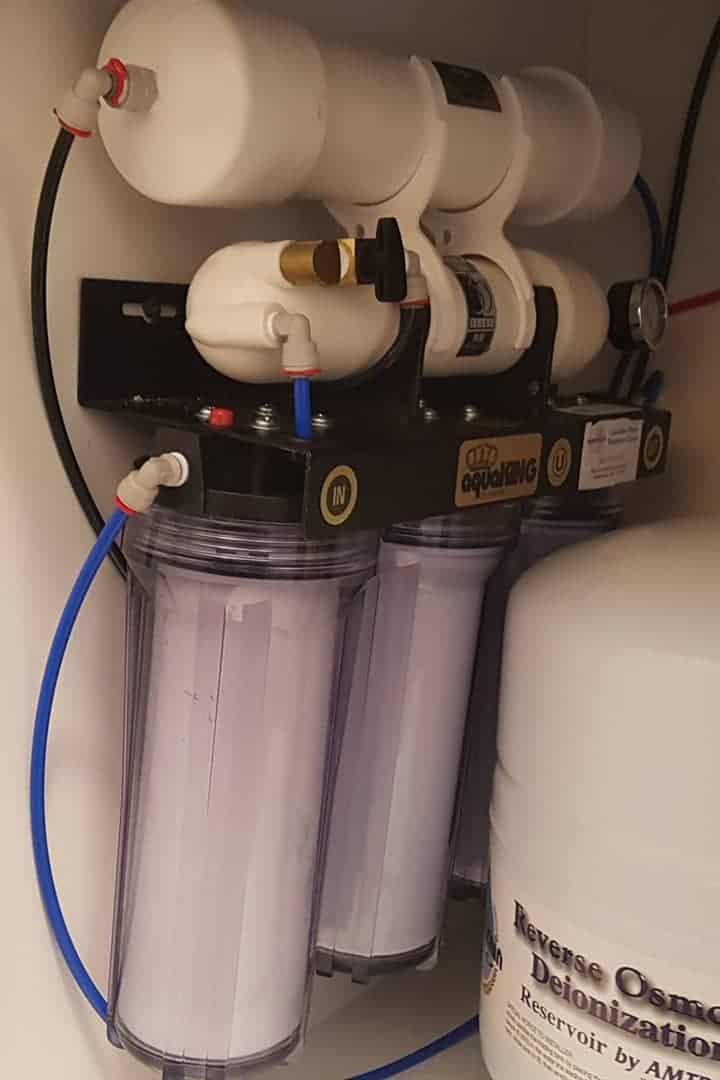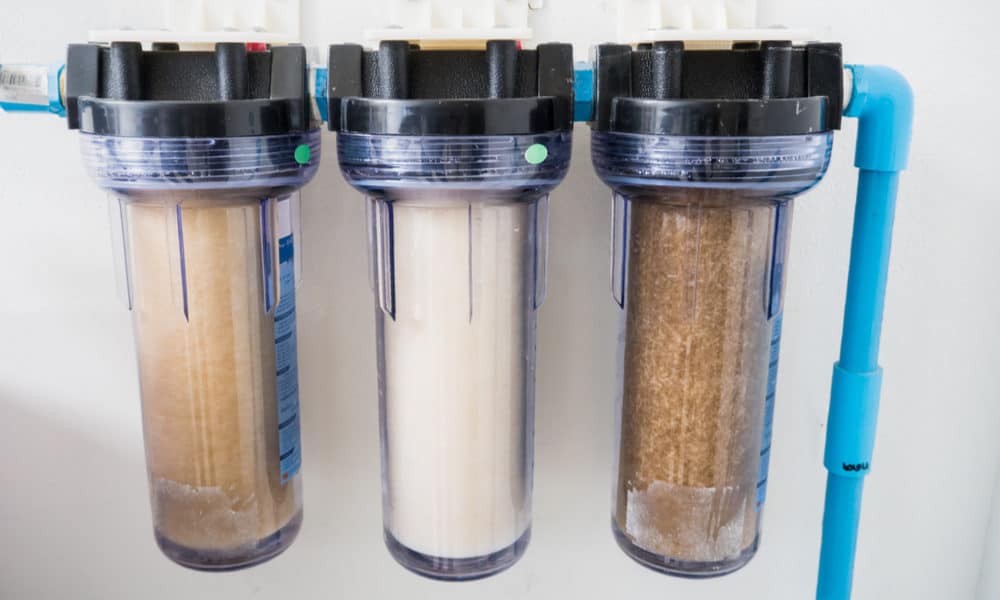Water is essential in our lives. Around two-thirds of our bodies are made from water and it is advised to drink upwards of 2 liters of water every day. It is therefore surprising that we want to drink refreshing, clean water?
Many people rely on water filters to remove impurities and leave them with a refreshing drink. However, people are often uncertain about controversial health information on the ion fluoride and whether we should be drinking this.
Do water filters remove fluoride? And is this a good or bad thing for our health?
The Benefits of Fluoridated Water
Fluorides are compounds naturally found in water. Back in the 1940s, research found people drinking highly fluoridated water had improved oral health and fewer dental cavities. Other studies have found fluoride can even reverse tooth decay by enhancing the re-build of enamel and inhibiting acid-producing bacteria in the mouth. (1)
After seeing the benefits, water fluoridation – the process of adding fluoride to drinking water – started in Michigan in 1945 (2). Now 72% of the US population is served by fluoridated water supplies (3). Water fluoridation is strictly monitored with the current maximum fluoride concentration of 0.7mg/L (4)
Unsurprisingly, drinking fluoridated water is recommended by most health organizations worldwide including the American Dental Association, US Public Health Service and the World Health Organization. (5)
The Risks of Fluoridated Water

The problem comes when fluoride levels are above the recommended amount. One common issue is dental fluorosis whereby fluoride causes white lines and marks on the teeth. Though not affecting dental health, the discoloration is visible. (6)
A more serious risk of excessive fluoride consumption is its links to skeletal fluorosis, a bone disease that increases the risk of fractures and impairs joint mobility. There have also been reports that fluoride could increase the risks of bone cancer and osteoarthritis.
Fluoride has also been termed a possible neurotoxin for children following a study in 2014 which looked at child development. Higher fluoride levels were linked with lower IQ scores.
Within the regulated levels, fluoride is unlikely to cause harm. It seems that though harmful in excess, fluoride is beneficial in small amounts.
Still not sure what to think? Here’s a YouTube video that gives more information about both the benefits and the risks of ingesting fluoride through our water sources.

Types of Water Filter
Different types of water filter, be that under-sink, counter-top, or portable $20 pitcher filters, take out those nasty impurities from your drinking water. Chances are you already have a water filter, but does it remove fluoride?
To answer this, it’s best to start looking at the types of filters and how they work. The filter mechanism varies depending on what impurities are being removed. Most types of filters will use one of two methods: physical filters or chemical filters. (7)
- Physical Filters:
Physical filters are essentially glorified sieves. They are porous membranes that catch larger molecules such as dirt and sediment and clean water comes out the other side. If you are using a purely physical filter, these are incapable of removing fluoride.
The presence of large compounds in water can affect other forms of filtration from working effectively, so nearly all water filters will have a physical filter, either alone or in combination with a chemical filter.
- Chemical Filters
Removing chemicals and ions from drinking water is more challenging than removing larger molecules. This is where chemical filters come in.
The chemical filter reacts with contaminants in the water; once impurities have been chemically altered the filter holds onto them, allowing the clean, fresh water to pass. There is a range of chemical filters each tailored at removing certain compounds from water.
Removal of Fluoride Using Water Filters

With fluoride being an ion, chemical filtration is needed to remove it from water supplies and even then, it is quite challenging to remove. The most effective way of fluoride filtration is using a bone char filter or a reverse osmosis filter, as recommended by the EPA and Water Quality Association.
Bone char filtration uses mainly calcium carbonate taken from the bones of animals. The fluoride ions displace unharmful hydroxide ions, trapping fluoride in the filter membrane.
Reverse osmosis works by pushing the water through a membrane that allows next to nothing but pure water through. How it does this can be pretty challenging to explain, so watch this video to find out more.

Fluoride Water Filters at Home
Most home water filters are not advanced enough to remove fluoride, but if you’re looking for one the APEC RO-90 Reverse Osmosis is a good place to start. It can reduce fluoride levels by 97.7% and is available on Amazon. This handy piece can filter up to 90 gallons per day!
Other good reverse osmosis filters include the Aquasana OptimH20 and the iSpring RCC7AK water filters. These are both under-sink units and are super easy for installation and replacements.
The only problem with these filters: they’re pretty expensive.
In 2018, a new technology using inexpensive proteins from milk and other sources was developed to help fluoride removal. This could be a big step to treating fluoride contamination and could lead to more affordable fluoride filters being available for household use. This video tells you a bit more.

Conclusion
So, do water filters remove fluoride? The answer is: sometimes. With most types of filters, fluoride is escaping through and making its way into your glass. It is, however, possible using reverse osmosis or bone char filters to remove these ions.
If you’re worried about fluoride levels, here are some steps to take:
- Check the fluoride levels of your area – they might be low enough for you to not worry!
- Look at home-based fluoride filters such as the APEC RO-90, Aquasana OptimH20, and the iSpring RCC7AK.
- Use fluoridated toothpaste so you don’t miss out on the oral health benefits if you decide to filter out fluoride.
Whether it is essential to drink fluoride-free water is down to personal preference.
Are you worried about drinking fluoridated water? Or do you trust the oral health advice and benefits associated? Let us know your thoughts in the comments. We have a complete guide to remove fluoride from water if you are wanting something more specific.
